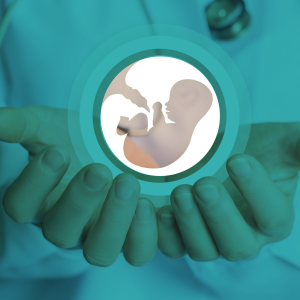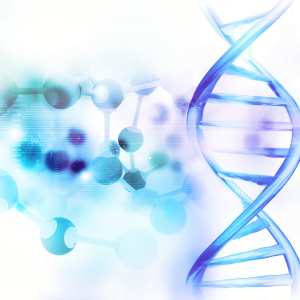
Science fiction has leaned on murky explanations of genetically engineered humans for decades — people with tails or bright pink hair or super strength. None of that falls in line with our current capabilities or ethical guidelines for genetics, but it does capture the public imagination. So when a scientist in China claimed he had overseen the creation and birth of the world’s first genetically edited babies, it garnered a lot of attention from both the public and the scientific community.
The discussion gained even more momentum from the fact the scientist said he used CRISPR to make the genetic changes. CRISPR has unlocked an extraordinary number of research opportunities, because it makes gene editing cheaper and more accessible, but the ease of use has also raised alarm among some who see risk in all the excitement.
There’s plenty of room for debate on the topic, and that debate is already raging across op-ed pages and Facebook comments. But we want you to understand the genetics and concepts that we’re actually talking about here.
 Babies, Revised
Babies, Revised
For the moment, let’s leave projecting what a future of genetic mutants would look like to the scifi writers. The science of the current moment is complicated enough.
The Associated Press reported the claim on November 26, 2018. Chinese scientist He Jiankui told them the world’s first genetically edited babies, twin girls, had been born earlier in November.
You may have noticed in the wording that the babies were born with the edits already made. In fact, the tinkering was done with embryos which were created through in vitro fertilization.
The editing technique itself, called CRISPR Cas9, will get a blog post all its own. For the moment though, just know that CRISPR Cas9 is unique in that it can target very specific parts of the genome for editing, allowing scientists to make targeted changes.
However, worries have already been raised that CRISPR Cas9 edits could come with barely understood consequences. Some researchers argue that the edits are accompanied by unintended genetic deletions often enough to cause concern. It’s also possible that edits to one part of the genome could have ripple effects well outside of the systems we currently associate with that section of DNA, either through off target mutations that happen in other parts of the sequence or unexpected changes in function caused by the targeted edit.
In this case, the stated aim was to prevent the babies from contracting HIV, since the father is HIV positive. He says he disabled the CCR5 gene in the embryos. CCR5 has been linked to HIV’s ability to enter cells and individuals with mutated CCR5 are protected against HIV infection.
Scientists leveled all manner of criticism at He, ranging from the fact that medicine already has treatments to help prevent children from contracting HIV to the fact that unless the editing was flawless it may have no positive effect at all, while still creating significant risk.
The experiment also crossed an important line in that since the editing happened in an embryo, it would, in theory, change not only the genetics of the patients but also of all their descendants.
Out of Nowhere
It’s important to note that this announcement surprised the scientific community just as much as it did the general public, if not moreso.
The data from his alleged experiment has not been peer reviewed. No matter how rigorous the process He employed in his lab, the announcement itself had not been through the rigor you might expect for such an important and controversial claim.
He presented later in the week at the International Human Genome Editing Summit at the University of Hong Kong, but organizers at the conference say that when He submitted the slides for the presentation, he included nothing about the work having already led to births.
Other Chinese researchers who work in the field also expressed shock and dismay, with more than 100 of them condemning the work in a joint letter as “a huge blow to the global reputation and development” of Chinese research.
Even He’s university, Southern University of Science and Technology in Shenzen, disavowed knowledge of the experiment, saying He “seriously violated academic ethics and codes of conduct.”
All this to say, science is not charging headlong into a world of human gene editing. This appears to be a single scientist acting largely in isolation.
The Most Known Unknowns
Perhaps the most important thing to know about this story — is how much we don’t know about this story.
Science undergoes peer review for a reason. It needs to be checked and double-checked for validity, even if everyone is acting in good faith. Especially when we talk about an enormous, controversial advancement like this one, peer review is about so much more than dotting i’s and crossing t’s.
Scientists that reviewed He’s work for the AP ahead of publication found it wanting, arguing that it may not have even delivered on its intention. He says he submitted his study to a journal but wouldn’t make full results available until the paper is published. He also acknowledged that the same editing protocol has produced a second pregnancy, although it is in a very early stage.
 After He’s talk at the International Human Genome Editing Summit, David Liu, a leading developer of genome editing tools, told STAT News, “It’s even more appalling and abhorrent now. His responses displayed a deeply disturbing naivete about the issues involved.”
After He’s talk at the International Human Genome Editing Summit, David Liu, a leading developer of genome editing tools, told STAT News, “It’s even more appalling and abhorrent now. His responses displayed a deeply disturbing naivete about the issues involved.”
Those issues go well beyond the nucleotides involved in editing DNA. This is the future of bioethics, and the conversations surrounding the topic will define many future research projects.
That’s what it’s so important to understand both what He did and the context of his actions. Because genetics has so much to offer in the medical field without going to the extremes that this researcher did.
At the conclusion of the International Summit on Human Genome Editing where He presented, the conference organizing committee issued a statement calling the claim “deeply disturbing” and “irresponsible.” They also noted the alleged study failed “to conform to international norms.”
The organizers cautioned that “the scientific understanding and technical requirements for clinical practice remain too uncertain and the risks too great to permit clinical trials of germline editing at this time.”
They also noted, “Progress over the last three years and the discussions at the current summit, however, suggest that it is time to define a rigorous, responsible translational pathway toward such trials.”
To schedule a media interview with Dr. Neil Lamb or to invite him to speak at an event or conference, please contact Margetta Thomas by email at mthomas@hudsonalpha.org or by phone: Office (256) 327-0425 | Cell (256) 937-8210
Get the Latest Sharable Science Delivered Straight to Your Inbox!
[gravityform id=19 title=false description=false ajax=true][wprpw_display_layout id=8]


